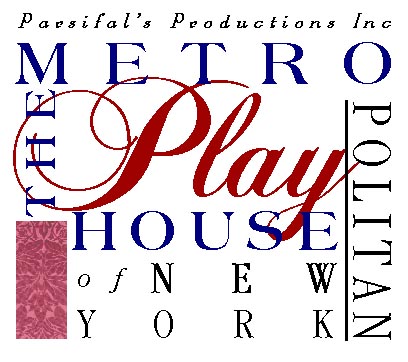Law and Order
Who doesn’t love a good crime drama? The crime drama lets a civil society act out illicit fantasies while stoking moral outrage, and, usually, the hand of justice descends just before the final curtain does. What a ride! The crime drama is as old as the Oresteia, and its popularity has hardly faded since Aeschylus took his Dionysian prize in 458 BC. Pity, Fear, Catharsis, and Resolution. (Let’s eat.) In some sense, violation of law and the pursuit of justice underlie the plots of most drama. Murder mysteries, romances, family crises alike: most stories begin with a transgression, and they don’t end until that transgression is revealed and its ramifications are resolved.
Resolution is not always the same as justice, of course, and justice is not always delivered through the Law. And hence a favorite species of crime drama: one that underscores the disconnect between Law and Justice. Filled with crimes and transgressions, Within the Law, from 1912, is such a play…and more.
The eventful plot opens with summary justice. Mary Turner, hardworking shop girl, is falsely imprisoned for stealing from her employer, Edward Gilder. Though a philanthropic man who takes pride in conducting business ethically and giving to the less fortunate, Gilder resists the urgings of her trial judge to suspend her sentence and insists she do time as a warning to others. Four years pass, Mary is out of prison, and she has spent her time learning the ins and outs of the legal system that put her away. She now leads of a small ‘family’ of reformed petty crooks, devising schemes to use the law to cheat the truly nefarious, playing on their greed or their lust, and doing very well. Elegant, humorous, and generous, Mary would be center of a comical tale of scamps done good, if not for two darker narratives.
The one is Mary’s fixation on revenge, which she pursues through a plan to marry Gilder’s earnest son. Young Gilder’s honest love for her is irrelevant to Mary: a rich man must be humiliated. The second shadow is cast by her single-minded nemesis, Inspector Burke of the New York City Police Department, who, like a New York City Javert, is determined to see Mary and her cohorts back behind bars, whether they are committing crimes or not.
The thrillingly twisting plot– a melodramatic roller coaster ride.–springs from the crossing of these two vendettas and is peopled by high-brows and low-lifes, straight arrows and crooked stoolies, fast talkers and slow wits. The play is in love with theater as a window on forbidden worlds and an arena for the clash of colorful opposites. Comedy springs from mocking the pretentious and entitled, while admiring the earnest and giving. Excitement comes in form of a set-up , a break-in, a shoot-em-up, and a show-down. On the one hand, then, it keeps a light-fingered touch on its themes, pointing out the ironies of society’s failings with indulgent mockery. But this fast ride takes in some disturbing sights, and the appeal for an audience today may be even more its perceptive social critique as its whimsical portrait of 1912 society.
See Something; Say Something
In the playful but trenchant style of the Progressive era theater, Within the Law combines melodramatic conflict, sentimental incident, and moving appeals for social justice. Frolicking towards a cleansing resolution, it reveals many a blot on the social contract and that contract’s enforcement.
The social critique is bright and articulate, and injustices entrenched in class and social institutions are the subject. As foundation, honest affections and instinctive fairness are contrasted with dishonest alliances and legally enshrined injustice. Fair behavior takes many forms: the warm camaraderie among Mary’s “gang,” expressed in self-sacrifice, forgiveness, and unflagging faith in one another’s integrity; the open-hearted love of young Gilder for Mary, in spite of his father’s and his class’s judgment; and the District Attorney’s faith in the legal system, however flawed its agents may be—all point to a sense of justice in the world that bridges and defies social order.
Opposed to that innate sense of right is the corrupted rule of Law, which is built to protect the status quo. Not every agent of the powerful and the law is crooked, but rather and encourages duplicitous, abusive, and sometimes criminal behavior on the part of the citizenry and the police, alike. Law protects the power of the wealthy, however bad their behavior. (In a comic episode, a bank president’s wife, caught shoplifting, demands an apology from Gilder for being detained by store security. And she gets it.) But Law also assures the impotence of the impoverished. Burke’s attitude towards Mary—once a criminal, always a criminal—is typical of the age. In the worst characterization, mere accusation brands the indigent as criminals; so branded, they are unable to find employment; and unemployable, they must in factbecome criminals to survive.
The broader target of the play, then, is a social power structure that protects itself at the expense of individual opportunities. If the details of this portrait are relics of the Gilded Age, they are all the more telling for their familiarity today. Consider the “deadline,” established by Police Commissioner Teddy Roosevelt, the imaginary line across Manhattan below which anyone with a criminal record could be arrested without question—arbitrary detainment that puts “Stop and Frisk” to shame. Mary’s appeal to Gilder on behalf of employees who actually steal is a practical defense of the minimum wage and healthcare both: “Do you know that the first time an honest girl steals, it’s often because she needs a doctor or some luxury like that?” The wealthy Gilder defends his insistence that Mary go to prison for the crime he thinks she has committed, in spite of the judge’s encouraging leniency, with these words to the DA: “Property has some rights, Demarest, although it’s getting so nowadays that nobody seems to think so.” When she acquires a restraining order to protect her from police harassment, she compares the rights of individuals to the rights of corporations: “a railroad can restrain their employees from striking. Why shouldn’t I get one too?” Most chilling to us may be Burke’s simple response when she asserts her rights under interrogation. Says the detective, “The Constitution don’t go here.”
I Know Not Seems
In some sense, the play draws its energy from the tension between appearance and actuality, and as if reminding us of the guilty conscience of society at large, one of the greatest threats to the powerful in the play is exposure. The Society lady thief cannot be exposed because of the embarrassment to all concerned, Mary’s blackmailing scheme depends on exposure of a rich man’s flirtation with a lower class girl, Mary is imprisoned to set an example for other shop girls, Dick’s marriage to Mary is embarrassing to his family, and he is urged to break it off with the shaming image of his wife being paraded before ogling policemen who will observe and measure her body.
Meanwhile, the threats to security of any of the characters are typically made through forms of imposture. Low class Agnes is practicing lady-like behavior to better con her marks, in a scene that at once amusing for her failures and disturbing for its intimations that society is simply a put-on. More transparently, one of Agnes’s victims tries to get his own back by planting marked bills in Mary’s apartment, while Burke’s efforts to snare Mary depends on lies to Gilder and the machinations of a stool pigeon. The fragile world of the play is held together by subversive pretense on the part of the law and its defiers both; it is indicative of the play’s sympathies that that the one who takes the bullet is the skunk who betrayed his friends.
In the end, there is resolution. Truths are told, the innocent are vindicated, the devious are exposed, and true love is embraced. But the ending is hardly unequivocally “happy.” Mary will never recover the years lost to prison, the crooked cops get no comeuppance, and a good man, ensnared by personal weakness and bad luck, faces execution. In this way, for all its soft heart, the play remains hard-headed about the prospects for ideals of fairness in a world that must establish law. It is an ideal conclusion to Metropolitan’s Season of Justice.
– Alex Roe
 Bayard Veiller (1869 – 1943)
Bayard Veiller (1869 – 1943)
Dating his interest in theater back to a performance he saw when he was 10 (Patience, in Chicago), he was a prolific playwright with a play on stage nearly every year from 1907 to 1922, and is best known best known for the Trial of Mary Dugan (1927), The Thirteenth Chair (1916), and Within the Law (1912).
However, after his first effort met with disapprobation from none other than Augustin Daly, he worked as a reporter for The World for several years, then variously in a logging camp, as a mule-skinner for the Union Pacific Railroad, as owner of a stock company, a theatrical agent, and again in newspapers on the West Coast, before returning to stage writing. He later joined many others of his generation in writing for Hollywood, and contributed to over 32 screenplays, including adaptations of some of his popular stage works. In 1901 he married English actress Margaret Wycherly, and after their divorce in 1922, author Marguerite Vale (who wrote under the pseudonym Martin Vale).
Within the Law, which was turned into a film five times, opened in 1912 in Chicago with only moderate success, but Edgar Selwyn bought a controlling interest, and brought the play to the Eltinge Theatre in New York. Veiller, in need of cash, sold his royalty rights to Selwyn, which deprived him of an income that might have set him for life, as the play was an immediate hit in New York. The play brought fame to Veiller nonetheless, and his future life as a writer begins with this triumph.
